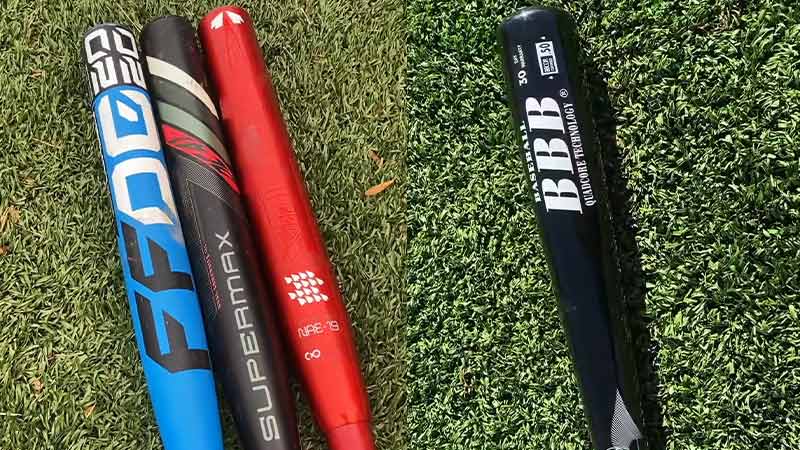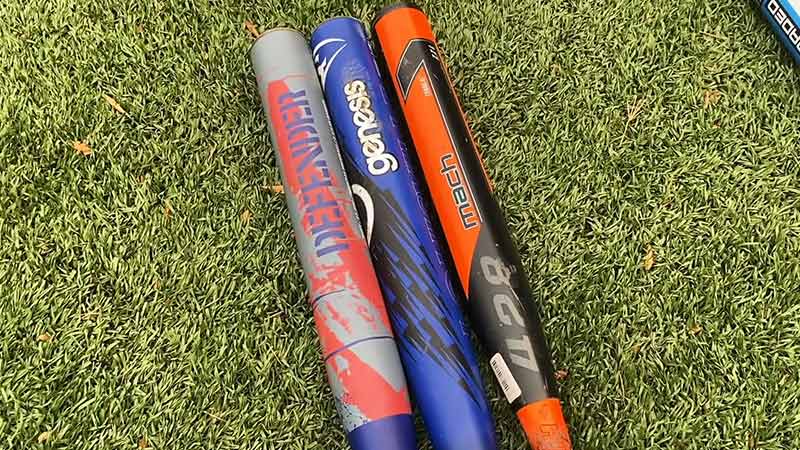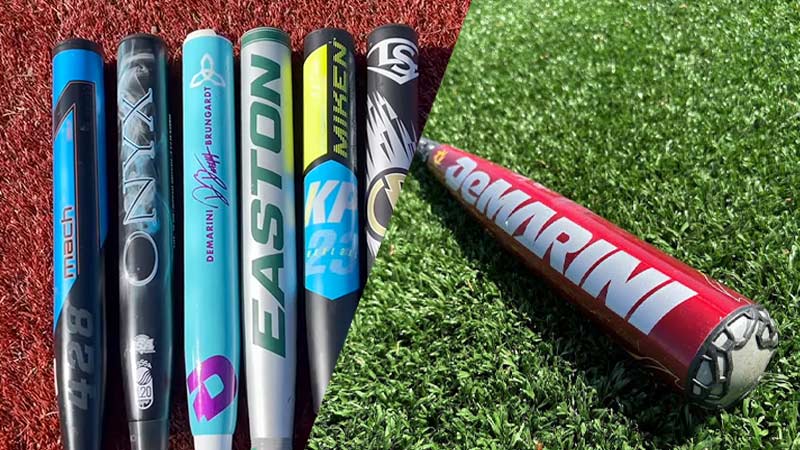When it comes to playing the thrilling sports of softball and baseball, having the right equipment is essential for a successful game. Among the crucial pieces of equipment are the bats, which play a significant role in the performance of the players.
While softball and baseball bats may appear similar at first glance, there are distinct differences between them that cater to the specific requirements and rules of each game.
In this article, we will explore the differences between softball and baseball bats, including their origins, materials, styles, functions, costs, and popular brands.
By understanding these differences, you can make an informed decision when choosing the best bat for your game. So, stay focused.
What is a Softball Bat?
A softball bat is a specialized bat designed specifically for playing softball, which is a sport similar to baseball but with some distinct differences. Softball bats are used to hit larger and softer balls that are pitched underhand.
The game of softball typically has a smaller field dimension compared to baseball, and the pitching style involves an underhand motion.
Softball bats are specifically engineered to optimize bat speed, power, and performance while adhering to the regulations and standards of the sport.
They are designed to provide the necessary balance and weight distribution to generate optimal hitting capabilities.
Softball bats come in various materials, including aluminum, composite, and wood, each offering unique characteristics that affect the bat’s performance and durability.
What is a Baseball Bat?
A baseball bat, on the other hand, is specifically designed for playing baseball. Baseball involves hitting a smaller and harder ball with a cylindrical bat. The game of baseball features overhand pitching and larger field dimensions compared to softball.
Baseball bats are designed to maximize hitting distance, speed, and accuracy while adhering to the rules and regulations of the game.
They are crafted with specific dimensions, weight distribution, and material composition to optimize performance on the field.
Baseball bats are commonly made from materials such as wood, aluminum, composite, or a combination of materials. Each material offers its unique properties, influencing factors such as bat speed, power, and durability.
Differences between Softball vs Baseball Bat

When it comes to the world of bat-and-ball sports, softball, and baseball are two popular choices.
While they share similarities, such as the objective of hitting a ball with a bat, there are distinct differences between the bats used in these two sports.
From their construction and materials to their size and design, softball bats and baseball bats have unique features tailored to the specific requirements of each game.
The differences between softball and baseball bats are essential for players and enthusiasts to make informed decisions when selecting the right equipment for their chosen sport.
Origin
Softball and baseball have different origins, and their bats reflect these origins. Softball originated as an indoor version of baseball and was initially played with a broomstick or a boxing glove.
As the game evolved, dedicated softball bats were developed to accommodate the larger ball size and shorter pitching distance. Baseball, on the other hand, has a long history, and baseball bats have evolved to meet the demands of the sport.
Material
Softball and baseball bats are constructed using different materials to optimize performance. Softball bats are typically made from composite materials such as carbon fiber, fiberglass, Kevlar, or aluminum alloys. These materials offer a larger sweet spot, increased flexibility, and enhanced trampoline effect.
Baseball bats, on the other hand, are made from wood (such as maple, ash, or birch) or various types of alloys (such as aluminum or composite materials). Wood bats are commonly used in professional baseball, while aluminum and composite bats are popular choices in amateur leagues and youth baseball.
Style
Softball and baseball bats also differ in terms of their design and construction. Softball bats are generally longer and heavier than baseball bats. They have a thicker barrel and a narrower handle to provide more power and stability when hitting larger and heavier balls.
Baseball bats, on the other hand, have a thinner barrel and a wider handle for better control and maneuverability when hitting smaller and faster balls.
Function
The function of a softball bat and a baseball bat is tailored to the specific requirements of each game. Softball bats are designed to generate greater power and distance due to the larger and less dense balls used in the sport.
They are engineered to maximize the trampoline effect and create a “whip” effect during the swing, allowing players to hit the ball with more force. Baseball bats, on the other hand, focus on balance, control, and bat speed.
They are designed to make quick contact with the smaller and denser baseballs, allowing for better bat control and the ability to place the ball with precision.
Cost
The cost of softball and baseball bats can vary significantly depending on factors such as material, brand, and technology used in their construction.
Generally, softball bats tend to be more expensive than baseball bats. This is partly due to the advanced materials and technologies incorporated into high-end softball bats, such as composite materials and specialized barrel designs.
Baseball bats, particularly those made from wood, can be relatively more affordable. However, high-end baseball bats made from advanced alloys or composite materials can also be quite expensive.
Popular Brands
Both softball and baseball bats are offered by various reputable brands that cater to the needs of players at different levels of the game. Some popular brands for softball bats include Easton, Louisville Slugger, DeMarini, Worth, and Mizuno.
For baseball bats, popular brands include Rawlings, Marucci, Easton, Louisville Slugger, and DeMarini. These brands are known for their quality, innovation, and commitment to providing players with bats that enhance performance and meet the standards of the game.
How to Choose the Best Softball Bat?

Choosing the best softball bat requires careful consideration of several factors. Here are some key aspects to consider when selecting a softball bat:
Length and Weight
The length and weight of the bat should be suitable for your size, strength, and hitting style. It’s important to find a bat that feels comfortable and allows you to generate maximum bat speed while maintaining control.
Consider your height, weight, and preference for a balanced or end-loaded bat when determining the ideal length and weight.
Barrel Size
Softball bats come with various barrel sizes, typically ranging from 2 ¼ inches to 2 ¾ inches in diameter. A larger barrel size generally provides a larger sweet spot, offering more forgiveness on off-center hits. However, a larger barrel size may also result in a slightly heavier bat.
Material
Consider the material used in the construction of the softball bat. Composite bats tend to have better durability, a larger sweet spot, and improved performance due to the advanced materials used.
Aluminum alloy bats, on the other hand, offer a traditional feel and good pop right out of the wrapper.
League and Certification
Make sure to choose a softball bat that complies with the regulations and certification requirements of your league or association.
Different leagues may have specific rules regarding barrel diameter, material, and certification stamps. Be aware of these guidelines to ensure your bat is legal for use in official games.
Reviews and Recommendations
Read reviews and seek recommendations from experienced players or coaches. User reviews can provide valuable insights into a bat’s performance, durability, and overall satisfaction.
Additionally, seek advice from knowledgeable individuals who can provide guidance based on their experience and expertise.
How to Choose the Best Baseball Bat?
Selecting the best baseball bat involves considering various factors that can impact your performance on the field. Here are some key aspects to consider when choosing a baseball bat:
Length and Weight
The length and weight of the baseball bat should be appropriate for your size, strength, and hitting style. Finding the right balance between length and weight is crucial to generate optimal bat speed and control.
Consider your height, weight, and personal preference for a balanced or end-loaded bat when selecting the length and weight.
Barrel Diameter
Baseball bats come with different barrel diameters, commonly ranging from 2 5/8 inches to 2 ¾ inches. Youth baseball leagues often have specific barrel size requirements, so be aware of the regulations in your league.
A larger barrel diameter generally offers a larger sweet spot and more forgiveness on off-center hits, but it may result in a slightly heavier bat.
Material
Consider the material used in the construction of the baseball bat. Wood bats, such as those made from maple, ash, or birch, offer a traditional feel and are commonly used in professional baseball.
Aluminum alloy bats are known for their durability and affordability, providing good pop right out of the wrapper. Composite bats feature advanced materials that offer enhanced performance, a larger sweet spot, and reduced vibration.
Drop Weight
The drop weight of a baseball bat refers to the numerical difference between the length of the bat in inches and the weight of the bat in ounces. A lower drop weight indicates a heavier bat, while a higher drop weight indicates a lighter bat.
Consider your strength, swing speed, and hitting style when choosing an appropriate drop weight. Younger players or those who need help with bat speed may benefit from a lighter drop weight, while stronger players may prefer a heavier bat.
League and Certification
Ensure that the baseball bat you choose complies with the regulations and certification requirements of your league or association.
Different leagues may have specific rules regarding barrel diameter, material, and certification stamps. It’s important to adhere to these guidelines to ensure your bat is legal for use in official games.
FAQs
Can I use a softball bat for baseball or vice versa?
While it is technically possible to use a softball bat for baseball or vice versa, it is not recommended. Softball and baseball bats are designed differently to accommodate the specific requirements and characteristics of each game.
Using a bat designed for one sport in the other may lead to suboptimal performance, decreased durability, and potential safety issues.
Are composite softball bats better than aluminum bats?
The choice between composite and aluminum softball bats depends on personal preference and specific needs. Composite bats tend to offer larger sweet spots, reduced vibration, and increased performance due to the advanced materials used.
Aluminum bats, on the other hand, provide a traditional feel, immediate performance, and durability. Consider your playing style, league regulations, and budget when deciding between the two.
Can I use a wooden baseball bat in youth leagues?
Some youth baseball leagues allow the use of wooden bats, while others may have specific regulations regarding bat material.
It’s important to check the rules of your league to determine if wooden bats are permitted. In general, composite or aluminum bats are more commonly used in youth leagues due to their lighter weight and improved performance.
Do I need to break in a softball or baseball bat?
The need to break in a softball or baseball bat depends on the material and construction of the bat. Composite softball bats often require a break-in period to optimize their performance.
This involves hitting several hundred balls or following the specific manufacturer’s guidelines to gradually break in the bat. Aluminum and wooden bats generally do not require a break-in period.
Can I use a damaged or cracked bat?
Using a damaged or cracked bat is not recommended as it can compromise performance, and safety, and maybe against league rules.
Cracks or significant damage to the bat can affect its structural integrity, potentially leading to breakage during use. It’s important to inspect your bat regularly and replace it if there are any signs of damage.
Bottom Line
Choosing the right bat is crucial for excelling in softball or baseball. The differences between softball and baseball bats, including their origins, materials, styles, functions, costs, and popular brands, allow you to make an informed decision.
Consider factors such as size, weight, material, league regulations, and personal preferences when selecting a bat.
By finding the perfect bat that suits your game, you can enhance your performance, enjoy the sport, and make the most out of your playing experience. Best of luck.







